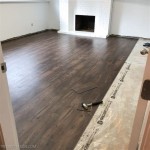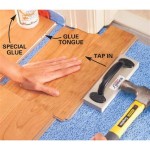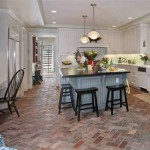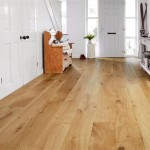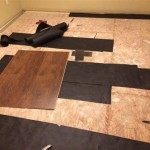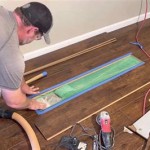Can I Put Vinyl Plank Flooring on a Wall?
Vinyl plank flooring has become a popular choice for homeowners due to its durability, water resistance, and affordability. While traditionally used for floors, its versatility has led many to consider its application on walls. This article explores the feasibility and considerations for installing vinyl plank flooring on walls.
Wall Preparation and Suitability
Proper wall preparation is crucial for successful vinyl plank installation. The wall surface must be clean, dry, and level. Imperfections like cracks or holes should be filled and sanded smooth. Existing wallpaper should be removed completely, and any peeling paint should be scraped and primed. Glossy surfaces may require sanding to improve adhesion.
The suitability of the wall itself is also a factor. Walls prone to significant moisture, such as those in showers or behind sinks, are generally not recommended for vinyl plank installation. While vinyl plank is water-resistant, prolonged exposure to moisture can lead to issues with the adhesive and potentially damage the planks. Well-ventilated bathrooms with proper exhaust fans may be suitable, but direct contact with water should be avoided.
Installation Methods and Adhesive Choices
Several installation methods can be employed for applying vinyl plank flooring to walls. Click-lock vinyl planks, similar to those used for flooring, can be used on walls, but additional support may be needed to prevent sagging. Adhesive is commonly used to secure the planks firmly to the wall. Construction adhesive specifically designed for vinyl plank is recommended for optimal results. Liquid nails or other strong adhesives can also be effective, but compatibility with the specific vinyl plank material should be verified.
For vertically installed planks, starting at the bottom and working upwards is generally recommended. This ensures proper alignment and minimizes the risk of the planks shifting or separating. For horizontally installed planks, starting at one corner and working across is the typical approach. Using a level and spacers can help maintain consistent spacing and a straight installation.
Aesthetic Considerations and Design Choices
Vinyl plank comes in a wide variety of styles, colors, and textures, offering numerous design possibilities for wall applications. Wood-look planks can create a rustic or modern aesthetic, depending on the chosen finish. Stone or tile-look planks can add a touch of elegance or industrial chic. The direction of the planks, whether vertical, horizontal, or diagonal, can also significantly impact the overall visual effect. Vertical installations can create an illusion of height, while horizontal installations can emphasize width.
Consider the existing décor and lighting in the room when selecting vinyl plank for walls. Darker planks can create a cozy and intimate atmosphere, while lighter planks can brighten a space and make it feel more open. The use of contrasting trim or accent pieces can further enhance the design and create visual interest. Experimenting with different layouts and patterns can help achieve the desired aesthetic.
Long-Term Maintenance and Durability
Vinyl plank on walls is generally easy to maintain. Regular dusting or wiping with a damp cloth is typically sufficient to keep the surface clean. Avoid using abrasive cleaners or scrub brushes, as these can damage the finish. For more stubborn stains, a mild cleaning solution specifically designed for vinyl flooring can be used.
The durability of vinyl plank on walls is comparable to its durability on floors. It is resistant to scratches, dents, and fading, making it a suitable choice for high-traffic areas. However, it's important to note that sharp objects can still potentially damage the surface. Avoid placing furniture or decorations with sharp edges directly against the vinyl plank wall.
Cost-Effectiveness and Alternatives
Vinyl plank is generally considered a cost-effective alternative to traditional wall coverings such as tile or wood paneling. The material itself is relatively inexpensive, and the installation process is often less labor-intensive than other options. However, the overall cost will depend on the chosen style and quality of the vinyl plank, as well as the size of the wall area being covered.
Several alternative wall covering options exist, including paint, wallpaper, tile, and wood paneling. Each option has its own advantages and disadvantages in terms of cost, durability, aesthetics, and installation complexity. Careful consideration of these factors will help determine the most suitable wall covering for a particular project.

How To Install Vinyl Plank Flooring On Walls Europine

Can Vinyl Flooring Be Used On Walls Home Expo Asia

Lvt Versatile For Floor And Wall Covering S

Diy Wood Accent Wall Using Vinyl Planks Love Renovations

E Z Wall L Press Vinyl Plank Decor Project

Vinyl Planks On Wall

Diy L And Stick Vinyl Plank Accent Wall Hometalk

Diy Garage Accent Wall With E Z Vinyl Plank Flooring

Diy L And Stick Vinyl Wood Planks For Walls

Diy L And Stick Vinyl Plank Accent Wall Hometalk
See Also
